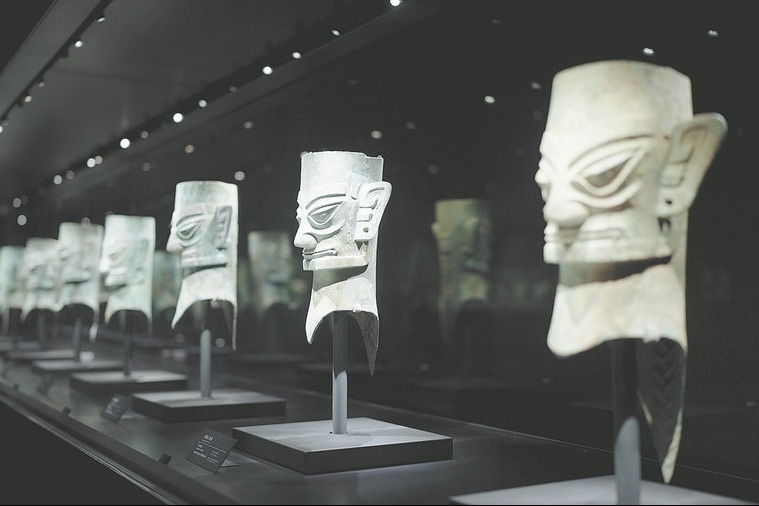Throwback stores get new lease of life
By Li Lei | China Daily | Updated: 2023-03-30 09:23
Outlets reminiscent of earlier days making comeback in rural regions
Dubbed the "super chain stores "of the planned economy period, gongxiaoshe, or the rural supply and marketing cooperatives, are making a comeback in aid of the country's national rural vitalization strategy.
The number of grassroots gongxiaoshe in Hubei province rose to almost 1,400 in 2021, doubling the 2014 level, and now their tentacles have reached every township and village in the province, according to local media.
Their penetration in the Ningxia Hui autonomous region, which not long ago was ranked among the most impoverished places in China, has also reportedly shot up to cover 92.7 percent of its townships.
Gongxiaoshe and its urban counterpart, State-owned department stores, were twin symbols of the era of material shortages, when everything from nails to sugar to television sets were rationed nationwide, and needed to be purchased using coupons.
They mushroomed across the country in less than a decade after the People's Republic of China was founded in 1949, helped China's war-devastated economy recover and promoted food production, experts said.
In their prime, the farmer-serving groups were a hub of economic affairs in rural communities. Via its all-reaching network, the State purchased crops and livestock from farmers residing in even the most far-flung villages and in turn supplied them with fertilizers and crop seeds.
Gongxiaoshe's dominance in the rural economy lasted for another two decades, until China adopted market-oriented reforms in 1978 and gave a nod to private ownership.
"For me as a child, gongxiaoshe were like treasure troves because you could find almost everything in them," 65-year-old Zhu Qizhen, a professor at China Agricultural University, said at an online event.
"I would usually go there with eggs, which I would barter for candies," he said, adding that people working in such places would be treated with great respect in that age.
Though gongxiaoshe gradually receded from public view starting in the 1980s, they have never left.
Official data showed that sales at such cooperatives nationwide reached more than 6 trillion yuan ($800 billion) in 2021, more than the sales on JD.com and Pinduoduo, some of China's largest e-vendors, combined.
Though many village-level gongxiaoshe disappeared amid the marketization drive, they remained intact at the county level and beyond.
China Co-op, a ministry-level agency led by the central government, was even restored to lead the system's reforms in 1995.
In addition, their presence remained unmovable in the transactions for fertilizer, crop seeds, cotton and other agricultural products.
Their vibrancy was even greater in isolated regions, which private logistics services and e-commerce platforms struggle to reach.
As China charges ahead to become a modern socialist country by the midcentury and achieve common prosperity, grassroots gongxiaoshe are expected to play bigger roles in closing the urban-rural wealth gap, which central authorities claim are a prerequisite to modernization.
Wang Laixi, a professor at Henan University of Technology, said the restoration of gongxiaoshe will help curb the cost of middlemen in the sales of fertilizers, seeds and other farming materials so as to boost farmers' incomes. They will also buy large amounts of fertilizers and seeds during the off-season.
"They help stabilize the price of pork and grain and prevent them from being manipulated by foreign capital," he told Henan Business Daily.
Liu Wuyi, a political adviser from Henan province, a major growing area, compared gongxiaoshe to post offices in an era teeming with private courier companies.
"You can send a postcard to almost any place in China with just a 0.8 yuan stamp, but that's impossible using courier services," he said.
For the last two decades, China has been reforming gongxiaoshe to let them serve its rural agenda.
In 2005, the central government started a project to use the cooperatives to promote the logistics and sales of farm produce.
After the country sped up its antipoverty campaign in 2013, gongxiaoshe have been a mainstay in the "No 1 Central Document" — the first document issued by the Central Committee of the Communist Party of China and the State Council each year.
At the annual Central Rural Work Conference, which was held from Dec 23 to 24 in Beijing last year, President Xi Jinping said that advancing rural vitalization across the board is an important task in building strong agriculture in the new era. Authorities need to shift human and material resources, and financial support to it.
Work must be done to revitalize industries, competent personnel, culture, ecosystems and organizations in rural areas in a coordinated manner, he said.
Gongxiaoshe are taking on new functions such as finance, logistics services and e-commerce, which are all badly needed services for farmers.
"The most urgent thing now is to break the stereotype people have of gongxiaoshe," said Wang. "We need to let young people feel that they are amiable, fashionable and useful."
























